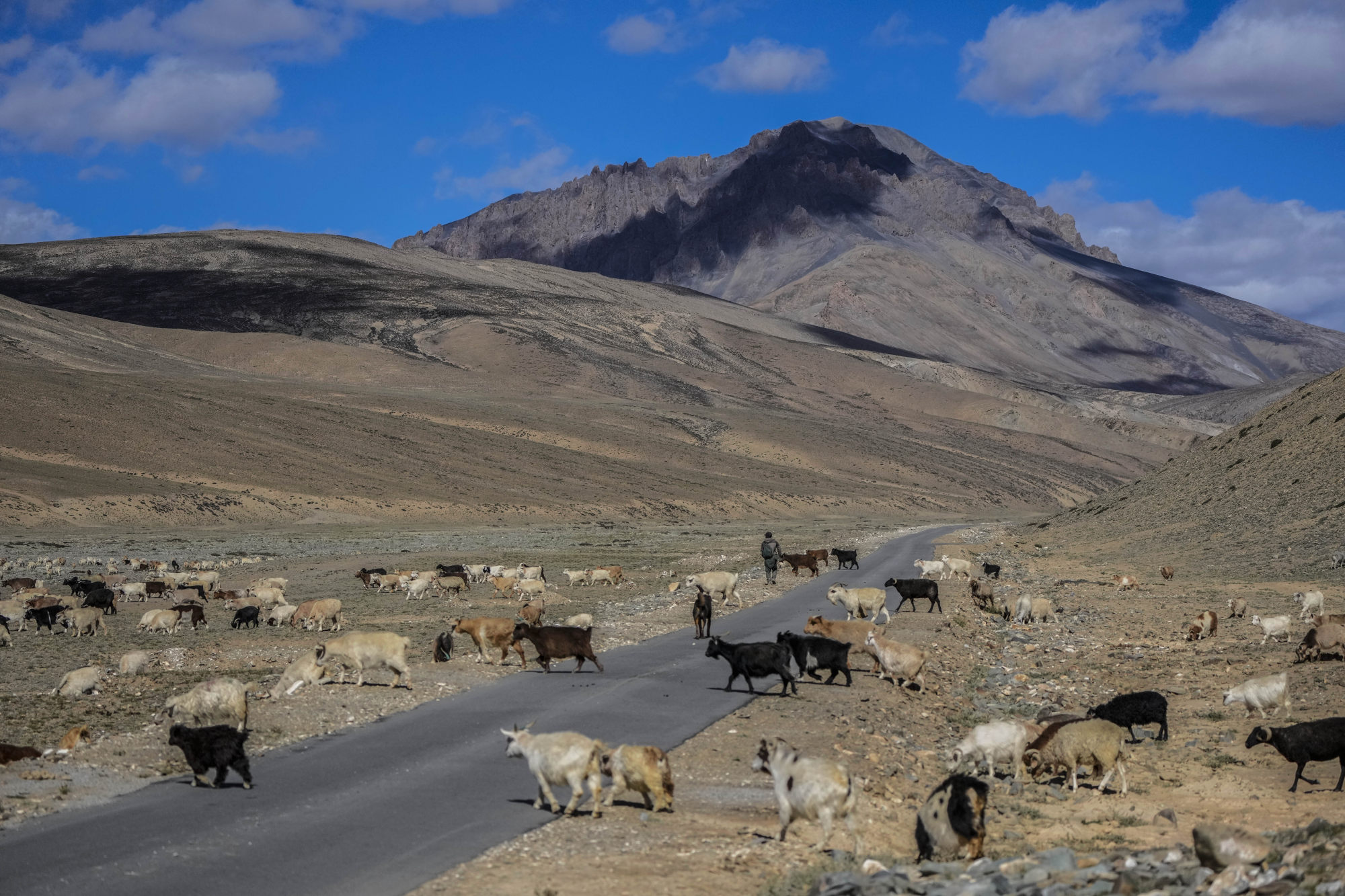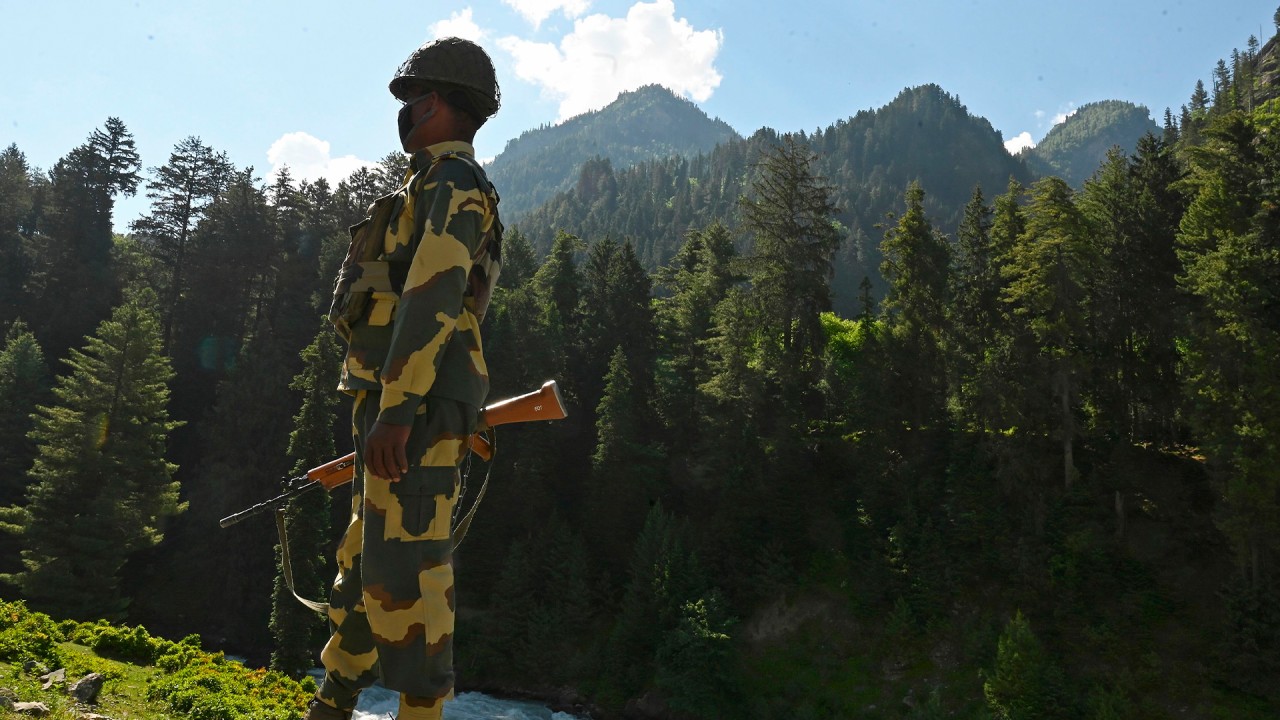
Amid China-India border row, rapid development takes a toll on Himalayan wildlife, environment
- India’s strategic focus on the border area is leading to added pressure for local communities, particularly in the northwest Himalayan region
- Sustaining defence personnel in the border region would threaten protected areas in Ladakh, one of India’s 10 vital biogeographic zones
From 2021 to 2022, the organisation built 6,763km of roads, including 1,400km along the border, covering strategic tunnels and airfields, and also constructed 87 bridges.
This strategic focus on the India-China border is leading to added pressure for local communities, particularly in the northwest Himalayan region, and ignores the sensitive ecology of the Himalayas.

The government’s moves reveal a lack of understanding associated with unplanned development and disasters. A holistic approach recognising the security linkages in the region based on multi-stakeholder consultation should be the way forward. But this is not happening.
Recently, central government ministers held the 10th meeting of the Group of Infrastructure Committee to discuss ways to resolve delays in infrastructure development, and forest and environment clearances. Experts believe that the fast-tracking of development would “compromise appraisal and assessment in the ecologically-vulnerable regions of the country”.
Sustaining defence personnel in the border region would require a vast land area, threatening protected areas such as wildlife sanctuaries in the Ladakh region, one of India’s 10 vital “biogeographic zones”. One concern is the rationalisation of two wildlife sanctuaries in Ladakh for expanding defence infrastructure, even affecting the local tribes living near the border.

Chinese attacks have fast-tracked decisions by easing forest and wildlife clearances. India’s National Board for Wildlife (NWBL), a body to promote the conservation and protection of wildlife and forests, gave the nod to build infrastructure, including one road passing through two wildlife sanctuaries.
Some experts have criticised the composition, functioning, and urgency of NWBL to speed up clearances. In 2021, the Supreme Court of India issued a notice regarding the non-functioning of the board and later revoked one of its decisions to promote economic interest over environmental security.
India’s Ladakh is in the ‘stone age’. Envying China makes life harder
Ladakh faces water scarcity and climate-induced threats to people’s livelihoods. Therefore, the biodiversity that acts as an ecosystem stabiliser in acute climate stress needs to be protected. Otherwise, glacial melting and the subsequent flooding will make the security situation more difficult to address.
The Joint Doctrine of the Indian Armed forces recognises the impact of non-traditional security risks affecting the security situation and the Indian Army’s initiatives to emphasise the importance of a sustainable ecosystem in developmental activities along the Line of Actual Control.
We see some positive signs in discourse and development, complementing the synergy between stakeholders to ensure “operational effectiveness and sustainable development in the border areas” and focus on green initiatives, but much more needs to be done. The policy-practice mismatch and border infrastructure have added to the stress on nature, complemented by the impact of climate change.
One example is the lack of a bird’s-eye view when it comes to the subsidence in Joshimath and its implications for operational capabilities. Ignoring any “impact on army operational preparedness” points towards a state-centric security approach.
India’s position largely influences the domestic organisational discourse and decisions to play down the environmental and climate change factor. India has traditionally been supportive of climate change action but has opposed the discourse around the inducement of climate fear and its securitisation. India sees it differently as a developing state.
This approach privileges development over security at international forums and emphasises national security over human security domestically, giving less room for any organisation to take an independent assessment like the military.
Is latest China-India border clash the start of increased violence to come?
China’s activities along the Himalayas, particularly in Bhutan and Nepal, have already raised concerns in India. With much neglect of the ecosystems in the Himalayan region, and the changing discourse and strategic shift, the environment is likely to be the casualty. If the situation continues, military consideration may take over, and environmental security will have to be compromised.
Abhishek Sharma is a Non-Resident Kelly fellow at the Pacific Forum, and a PhD student at the University of Delhi. His research focuses on climate change, militarisation, and new emerging technologies in East Asia.


